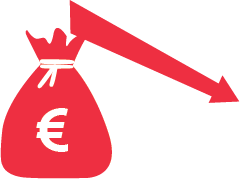What Are OEM and ODM In Maritime?
The main advantage of OEM is that the projector retains total creative control over the development. Whereas ODM products are restricted to a predetermined design, OEM products can be made according to any specifications
The equipment used in the shipping industry must always be accurate and precise. They must be able to function within the specified range, perform the expected tasks, and require minimal maintenance.
But how do shippers or other organizations involved in the industry determine the authenticity and effectiveness of different products?
That's why it's important to pay attention to these two specifications, which are often found in user manuals and product brochures - OEM and ODM.
Let's first look at the meaning of these two acronyms and the role they play in the shipping industry.
Original equipment manufacturing (OEM) is the manufacture of a product that is fully developed by the company. Other manufacturers are then allowed to manufacture these products under license. Only licensed manufacturers can produce these products legally.
On the other hand, ODM or original design manufacturing is when an existing product design is slightly modified by the manufacturer and then sold under a different brand name. These small modifications can be made according to customer requirements to meet certain specific needs.
But how do shippers or other organizations involved in the industry determine the authenticity and effectiveness of different products?
That's why it's important to pay attention to these two specifications, which are often found in user manuals and product brochures - OEM and ODM.
Let's first look at the meaning of these two acronyms and the role they play in the shipping industry.
Original equipment manufacturing (OEM) is the manufacture of a product that is fully developed by the company. Other manufacturers are then allowed to manufacture these products under license. Only licensed manufacturers can produce these products legally.
On the other hand, ODM or original design manufacturing is when an existing product design is slightly modified by the manufacturer and then sold under a different brand name. These small modifications can be made according to customer requirements to meet certain specific needs.


With a general understanding of these two terms, let's take a closer look at how and why they matter and how they should be interpreted.
Consider the case of a marine crane installed on the deck of a general-purpose ship. It has a load capacity of 2 tons, which is an integral part of the efficient loading and unloading of goods from the vessel.
The design and construction of offshore cranes is a very niche field that requires experience in manufacturing and specialized training to operate it. Some firms often build these cranes without following best engineering practices and specific customer instructions. This is why brand image plays an important role in nautical design.
The reputation gained through excellent work has helped found several companies.
For example, Wartsila is a well-known Finnish manufacturer specializing in the production of the highest quality marine equipment.
The aforementioned crane must have a reinforced base (withstanding the weight of the load) made of quality material. Validated certificates must be available certifying its operation in real-time (with the exception of computer simulations).
Even though this 2-ton capacity includes a factor of safety (FOS), the crane can often require additional and unforeseen load.
This is where it becomes important to know what design the crane is built on, who built it, and whether it has been legally certified as safe.
For our hypothetical crane, the OEM provides information about the firm that originally designed and tested it.
While the manufacturer may be different, if the OEM is a well-known firm, the end user can be assured that it has been designed and tested to the highest industry standards. At the same time, ODM will indicate if the crane is based on a different design, but has key differences in assembly, structure, mechanisms, equipment, etc.
This allows the end user to submit a modified project for further testing and see how it works. It also checks if the original design company has a reputation and follows best practices during the design phase.
Finally, and most importantly, it tells the end user if the crane they are using differs from the standard design.
Often modifications may not be approved by relevant authorities such as MARPOL (International Convention for the Prevention of Pollution from Ships) and IMO (International Maritime Organization), so it is important to know such details.
Consider the case of a marine crane installed on the deck of a general-purpose ship. It has a load capacity of 2 tons, which is an integral part of the efficient loading and unloading of goods from the vessel.
The design and construction of offshore cranes is a very niche field that requires experience in manufacturing and specialized training to operate it. Some firms often build these cranes without following best engineering practices and specific customer instructions. This is why brand image plays an important role in nautical design.
The reputation gained through excellent work has helped found several companies.
For example, Wartsila is a well-known Finnish manufacturer specializing in the production of the highest quality marine equipment.
The aforementioned crane must have a reinforced base (withstanding the weight of the load) made of quality material. Validated certificates must be available certifying its operation in real-time (with the exception of computer simulations).
Even though this 2-ton capacity includes a factor of safety (FOS), the crane can often require additional and unforeseen load.
This is where it becomes important to know what design the crane is built on, who built it, and whether it has been legally certified as safe.
For our hypothetical crane, the OEM provides information about the firm that originally designed and tested it.
While the manufacturer may be different, if the OEM is a well-known firm, the end user can be assured that it has been designed and tested to the highest industry standards. At the same time, ODM will indicate if the crane is based on a different design, but has key differences in assembly, structure, mechanisms, equipment, etc.
This allows the end user to submit a modified project for further testing and see how it works. It also checks if the original design company has a reputation and follows best practices during the design phase.
Finally, and most importantly, it tells the end user if the crane they are using differs from the standard design.
Often modifications may not be approved by relevant authorities such as MARPOL (International Convention for the Prevention of Pollution from Ships) and IMO (International Maritime Organization), so it is important to know such details.
Understanding the intricacies of OEM and ODM

An OEM (Original Equipment Manufacturer) is a company or person who has developed a unique design that has been licensed to manufacturing companies for mass production. They may make changes to the product or create new versions. Their only limitation is the capital required to create an idea, build a prototype, and test a new product.
The main costs are borne by OEM, as this is the main USP of the company. They have put a lot of time and effort into developing a unique design that is very different from other models on the market.
These products are often not copied or borrowed from existing products, but have original designs. In most of these cases, research and development (R&D) spending can run into millions of dollars.
One example is Amazon's famed R&D department, which developed innovative designs to promote the company. Not content with simply delivering goods, the company turned to an exciting new alternative to people.
Amazon cannot immediately begin to build their drones and will lease their proprietary design to an experienced manufacturer. In this case, Amazon is the OEM that has innovated and ideated a design and then licensed it out to a third party for manufacturing.
One thing to note is that manufacturers who build the actual product for OEMs may resell the goods under their branding, instead of the OEM firm's name.
This is illegal and is banned in most countries as an act of bad faith. Instead, the manufacturer is allowed to make changes to the design and then resell them with due credit to the ODM.
However, if the original designing company is not mentioned as the OEM or ODM, the goods are called alternative parts and are not considered to be original or genuine.
This is done to protect the intellectual rights that the original designer has over the product.
An ODM company or individual can be of 2 main types based on the role they fulfil:
1. They can be the manufacturers of a design borrowed from another product.
2. They can design and manufacture products for clients based on goods that they already produce.
While this may seem like contrasting responsibilities for ODMs, they each satisfy a particular demand in the global consumer market.
For instance, marine diesel engines work on the same principle irrespective of the make or manufacturer. However, they differ in the design of components such as valves, gauges, gears, couplers, etc.
In such cases, if a new competitor enters the market, it would license out an existing design, add their changes to it, and then rebrand it as a new product while giving credit to the original design (if mentioned in the licensing contract).
On the other hand, consider a manufacturer in Germany who designs and builds marine engines for several other companies.
Since all the designs cannot be the same due to stiff competition in the market, this ODM introduces its own changes to the design, builds it for various firms, and sells it in the market. In such cases, the same ODM acts as the designer cum manufacturer for several companies.
One easily understood example of the ODM is in the smartphone industry.
Companies such as Qualcomm design chips that are used on most phones. It is an in-house original design that they build. However, since most companies use these chips, Qualcomm builds and then installs or integrates the chip into the respective phone parts. The phone parts are then put together at another facility, where they are shipped off to different smartphone manufacturers around the world.
While it may seem counter-intuitive to have the same company building goods for competitors, it is a highly optimized supply chain that ensures maximum productivity with reduced transaction costs. Later in this article, we will look at the pitfalls of this method of operation.
The main costs are borne by OEM, as this is the main USP of the company. They have put a lot of time and effort into developing a unique design that is very different from other models on the market.
These products are often not copied or borrowed from existing products, but have original designs. In most of these cases, research and development (R&D) spending can run into millions of dollars.
One example is Amazon's famed R&D department, which developed innovative designs to promote the company. Not content with simply delivering goods, the company turned to an exciting new alternative to people.
Amazon cannot immediately begin to build their drones and will lease their proprietary design to an experienced manufacturer. In this case, Amazon is the OEM that has innovated and ideated a design and then licensed it out to a third party for manufacturing.
One thing to note is that manufacturers who build the actual product for OEMs may resell the goods under their branding, instead of the OEM firm's name.
This is illegal and is banned in most countries as an act of bad faith. Instead, the manufacturer is allowed to make changes to the design and then resell them with due credit to the ODM.
However, if the original designing company is not mentioned as the OEM or ODM, the goods are called alternative parts and are not considered to be original or genuine.
This is done to protect the intellectual rights that the original designer has over the product.
An ODM company or individual can be of 2 main types based on the role they fulfil:
1. They can be the manufacturers of a design borrowed from another product.
2. They can design and manufacture products for clients based on goods that they already produce.
While this may seem like contrasting responsibilities for ODMs, they each satisfy a particular demand in the global consumer market.
For instance, marine diesel engines work on the same principle irrespective of the make or manufacturer. However, they differ in the design of components such as valves, gauges, gears, couplers, etc.
In such cases, if a new competitor enters the market, it would license out an existing design, add their changes to it, and then rebrand it as a new product while giving credit to the original design (if mentioned in the licensing contract).
On the other hand, consider a manufacturer in Germany who designs and builds marine engines for several other companies.
Since all the designs cannot be the same due to stiff competition in the market, this ODM introduces its own changes to the design, builds it for various firms, and sells it in the market. In such cases, the same ODM acts as the designer cum manufacturer for several companies.
One easily understood example of the ODM is in the smartphone industry.
Companies such as Qualcomm design chips that are used on most phones. It is an in-house original design that they build. However, since most companies use these chips, Qualcomm builds and then installs or integrates the chip into the respective phone parts. The phone parts are then put together at another facility, where they are shipped off to different smartphone manufacturers around the world.
While it may seem counter-intuitive to have the same company building goods for competitors, it is a highly optimized supply chain that ensures maximum productivity with reduced transaction costs. Later in this article, we will look at the pitfalls of this method of operation.
Design aspects of OEM and ODM
Now that you know about the differences between these terms, what are the legal technicalities and ramifications of OEM and ODM?
A reputed designer of equipment used in the shipping industry is often able to come up with dozens of revolutionary ideas that could drastically change the way in which this industry operates.
However, manufacturing the design requires a very different set of skills, which the designer may not possess. This puts a strain on them when it comes to increasing the outreach of their proposed design.
At the same time, if they provide their design to a third-party manufacturer, there is always the risk of intellectual property theft. The sheer hassle of drafting a watertight legal contract would be overwhelming and eventually too much trouble to go to for the designer. So, what can they do in such cases?
The designer can opt to license out his design to a manufacturer for mass production. In this case, the designer retains complete control and legal rights over his innovation and can withdraw the license at any time. This also prevents the manufacturer from launching a rival product that has a copied design.
In all such cases, the OEM will be the original designer, and their name will appear on the final product. The manufacturer will also be credited on the product under the title "Manufactured by Company XYZ in Country ABC". This is legally required, since some countries may have an embargo on goods manufactured in certain countries.
Despite the Intellectual Property Rights (IPR) advantages that come with OEM, designers still have to ensure they approach reputed manufacturers. In this age of increased market competition for similar products, care must be taken that the original design is not leaked to a competitor.
What if a company dealing in marine cranes wishes to borrow the design of another company, but with enhanced features? While this might sound like IPR theft, the original designer can be credited on the new product as the ODM.
This certifies that the original design has been used as the basis for the production of a new product. Changes are also mentioned so that the user can distinguish between these products.
In some cases, one company may apply to another for a license to change the design. In this case, ODM may determine the exact legal nature of its arrangement, including intellectual property transfers, fees or royalties, and finished product branding credits.
Here, the ODM usually retains the rights to the original design while the new product is registered as a spin-off or change. The contract defines the IP protection offered by ODM and care must be taken when drafting it.
A reputed designer of equipment used in the shipping industry is often able to come up with dozens of revolutionary ideas that could drastically change the way in which this industry operates.
However, manufacturing the design requires a very different set of skills, which the designer may not possess. This puts a strain on them when it comes to increasing the outreach of their proposed design.
At the same time, if they provide their design to a third-party manufacturer, there is always the risk of intellectual property theft. The sheer hassle of drafting a watertight legal contract would be overwhelming and eventually too much trouble to go to for the designer. So, what can they do in such cases?
The designer can opt to license out his design to a manufacturer for mass production. In this case, the designer retains complete control and legal rights over his innovation and can withdraw the license at any time. This also prevents the manufacturer from launching a rival product that has a copied design.
In all such cases, the OEM will be the original designer, and their name will appear on the final product. The manufacturer will also be credited on the product under the title "Manufactured by Company XYZ in Country ABC". This is legally required, since some countries may have an embargo on goods manufactured in certain countries.
Despite the Intellectual Property Rights (IPR) advantages that come with OEM, designers still have to ensure they approach reputed manufacturers. In this age of increased market competition for similar products, care must be taken that the original design is not leaked to a competitor.
What if a company dealing in marine cranes wishes to borrow the design of another company, but with enhanced features? While this might sound like IPR theft, the original designer can be credited on the new product as the ODM.
This certifies that the original design has been used as the basis for the production of a new product. Changes are also mentioned so that the user can distinguish between these products.
In some cases, one company may apply to another for a license to change the design. In this case, ODM may determine the exact legal nature of its arrangement, including intellectual property transfers, fees or royalties, and finished product branding credits.
Here, the ODM usually retains the rights to the original design while the new product is registered as a spin-off or change. The contract defines the IP protection offered by ODM and care must be taken when drafting it.
The Legal Aspects of OEM and ODM
OEM and ODM are rarely used in the shipping industry these days as most designs are custom and proprietary.
OEM is the safest bet for a designer with sensitive information who wants to produce a product for the consumer market. They retain control over product innovation and design and license them only when necessary.
What's more, OEMs have virtually no design limits. They can be compared to the R&D departments of some large companies that identify a problem, come up with an innovative solution, and then release it to the market.
However, OEM has one significant drawback - it requires significant capital investment and resources. Innovation is a complex industry, especially since the market is saturated with similar products at similar prices. OEM projects are evaluated on two key parameters - resources and rewards.
OEM designers strive for low-cost, high-efficiency design processes, but a mistake can very well lead to low rewards. To do this, they must create large sources of income to fund their research and experiments. Finally, after development and release, there is always the threat of intellectual property theft.
Corporate espionage and hacking to gain access to secret projects have become almost commonplace in large corporations today as each seeks to dominate a highly competitive market.
ODMs, on the other hand, do not have to invest significant resources in the innovation process, since they mainly produce products based on the designs provided to them. This makes them significantly cheaper than products that carry the additional burden of research costs.
While companies working on new designs often fund this activity by increasing the cost of the product, ODMs must only charge the amount needed to cover their manufacturing costs. This makes ODM based products much cheaper.
However, ODMs face fierce competition with each other due to the market being oversaturated with similar products. Many of these products have minor technical features that often do not bother the consumer. Because they don't have to worry about the cost of innovation, these firms often cut prices significantly.
Unfortunately, when similar products are priced differently, consumers gravitate toward the cheapest product, no matter how small the difference. This forces other firms to cut prices. Eventually, the cost drops to a level where it becomes unprofitable. This is unhealthy market competition that could lead to shortages in the global economy.
There must be a large or significant difference between ODMs to justify a price increase. It also forces them to innovate to a certain extent in order to maintain a healthy profit margin.
This rapid jump between the selling price of a product and the cost of production can lead to a monopoly in the market, unhealthy competition, and a lack of incentives for innovators in the field.
Read more about Incoterms 2020. Point of Delivery and Transfer of Risk
OEM is the safest bet for a designer with sensitive information who wants to produce a product for the consumer market. They retain control over product innovation and design and license them only when necessary.
What's more, OEMs have virtually no design limits. They can be compared to the R&D departments of some large companies that identify a problem, come up with an innovative solution, and then release it to the market.
However, OEM has one significant drawback - it requires significant capital investment and resources. Innovation is a complex industry, especially since the market is saturated with similar products at similar prices. OEM projects are evaluated on two key parameters - resources and rewards.
OEM designers strive for low-cost, high-efficiency design processes, but a mistake can very well lead to low rewards. To do this, they must create large sources of income to fund their research and experiments. Finally, after development and release, there is always the threat of intellectual property theft.
Corporate espionage and hacking to gain access to secret projects have become almost commonplace in large corporations today as each seeks to dominate a highly competitive market.
ODMs, on the other hand, do not have to invest significant resources in the innovation process, since they mainly produce products based on the designs provided to them. This makes them significantly cheaper than products that carry the additional burden of research costs.
While companies working on new designs often fund this activity by increasing the cost of the product, ODMs must only charge the amount needed to cover their manufacturing costs. This makes ODM based products much cheaper.
However, ODMs face fierce competition with each other due to the market being oversaturated with similar products. Many of these products have minor technical features that often do not bother the consumer. Because they don't have to worry about the cost of innovation, these firms often cut prices significantly.
Unfortunately, when similar products are priced differently, consumers gravitate toward the cheapest product, no matter how small the difference. This forces other firms to cut prices. Eventually, the cost drops to a level where it becomes unprofitable. This is unhealthy market competition that could lead to shortages in the global economy.
There must be a large or significant difference between ODMs to justify a price increase. It also forces them to innovate to a certain extent in order to maintain a healthy profit margin.
This rapid jump between the selling price of a product and the cost of production can lead to a monopoly in the market, unhealthy competition, and a lack of incentives for innovators in the field.
Read more about Incoterms 2020. Point of Delivery and Transfer of Risk
Resume: Advantages and Disadvantages of OEM and ODM

TOP 5 factors contributing to lower fuel costs for Shipping companies
Get a presentation with a full description of the features and free pilot project with trial of Marine Digital FOS for 2 months
"Clicking the button, you consent to the processing of personal data and agree to the privacy policy"

Get an overview "The Pathway to Zero Carbon Shipping:
IMO Compliance and CII Optimization through SEEMP" on email and download it for FREE! Leave your email now!
"Clicking the button, you consent to the processing of personal data and agree to the privacy policy, as well as consent to subscribe to the newsletter. "
Аdvantage of Fuel Optimization System from Marine Digital:

Marine Digital FOS can be integrated with other system and third-party's solutions through the API. To implement vessel performance monitoring for any vessel, we are using mathematical algorithms, machine learning and the same equipment as in FOS. The more data we collect from vessels, the more precise reports and recommendations our system will perform according to your individual requirements in fleet management.
If you have any questions about the solutions and the Marine Digital System platform, write to us, we will be happy to answer
If you have any questions about the solutions and the Marine Digital System platform, write to us, we will be happy to answer

Increased business process speed

Reducing to zero the number of errors

Best offer to the clients

Reduction in operating expenses
Have a questions?





